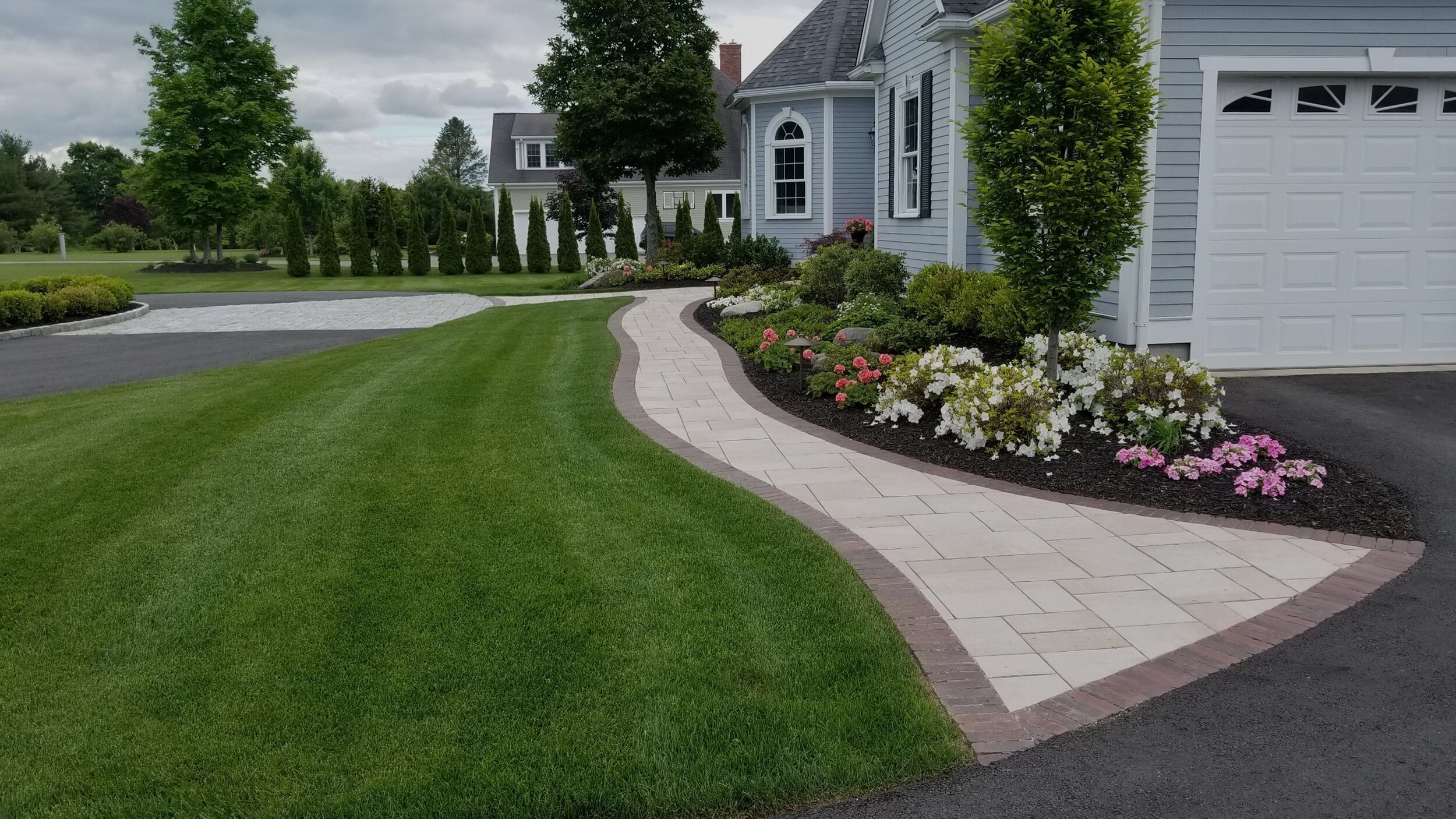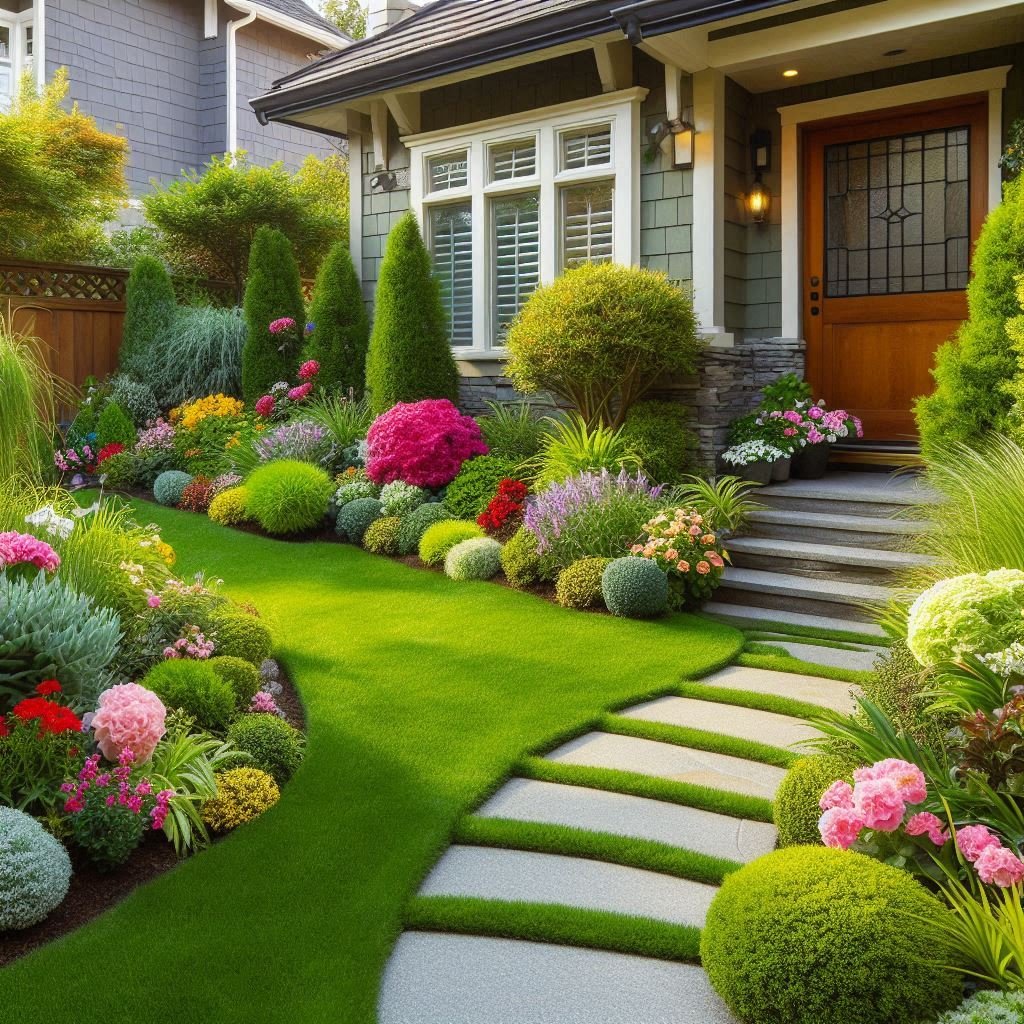Revamp Your Home's Exterior with Professional Landscape Layouts and Upkeep
The Value of Understanding Different Types of Landscape Design for Your Garden
Understanding the different types of landscaping is an important component in crafting a garden that not just mirrors individual preference however also meets eco-friendly needs. Each landscape design design-- be it formal, cottage, sustainable, or city-- gives distinctive benefits that can significantly influence the total wellness and appearances of your exterior area.
Benefits of Landscape Design Understanding
Comprehending the principles of landscape design provides numerous benefits for both newbie and skilled gardeners alike. A strong grasp of landscaping principles enables people to produce visually appealing and functional outside rooms that align with their individual choices and the particular qualities of their yards.
One significant advantage is enhanced environmental health and wellness. Knowledge of sustainable techniques and indigenous plants allows garden enthusiasts to cultivate ecosystems that advertise biodiversity while minimizing the demand for chemical fertilizers and chemicals. Furthermore, comprehending soil kinds and drainage can cause healthier plant growth and lowered disintegration.
Landscaping understanding additionally enhances the visual worth of a building. By learning more about design elements such as texture, color, and scale, garden enthusiasts can develop cohesive and inviting landscapes that boost aesthetic allure. This not only raises personal satisfaction but can also improve building value.
Moreover, educated garden enthusiasts can save time and resources. Acknowledging the right plants for certain problems, such as light and dampness levels, makes sure that initiatives are not thrown away on unsuitable selections. Ultimately, a detailed understanding of landscaping empowers individuals to make informed decisions, fostering a more gratifying gardening experience.
Summary of Landscaping Types
Landscaping includes a range of techniques and styles, each tailored to meet the unique needs and choices of garden enthusiasts. Understanding these varied types is vital for producing an outside space that lines up with ecological considerations and individual tastes.
One popular kind is traditional landscape design, identified by organized layouts, distinct flowerbeds, and making use of in proportion plantings. This design usually stresses a feeling of order and harmony within the yard - Landscape. On the other hand, naturalistic landscape design focuses on imitating the beauty of nature, making use of native plants and organic kinds to develop a much more relaxed and casual atmosphere
Lasting landscaping has actually obtained grip, advertising eco-friendly techniques that save water and reduce chemical use. This strategy commonly incorporates xeriscaping, which makes use of drought-resistant plants suitable for dry climates. Furthermore, urban landscaping addresses the obstacles of limited area in city settings, typically making use of vertical yards and rooftop areas to make the most of plant.
Formal Landscaping Explained
Defined by its thorough design and organized components, formal landscaping creates an atmosphere of elegance and refinement in outdoor areas. This design stresses symmetry, geometric shapes, and well-defined lines, often integrating polished bushes, topiaries, and organized flower beds. The overall impact is a refined and polished atmosphere that attracts focus to building attributes and enhances the charm of the surrounding landscape.
In official landscape design, paths are usually straight and might be lined with consistent products such as block or rock. These courses usually result in focal points such as water fountains, statues, or decorative trees, better boosting the organized nature of the design. Color palettes tend to be extra minimal, concentrating on unified mixes that promote a peaceful ambience.
Water attributes in official landscapes are generally made with accuracy, usually looking like rectangular or circular swimming pools. The careful positioning of plants is vital, with varieties selected for their capability to maintain a tidy look throughout the periods. Generally, formal landscaping is ideal for those that value order and beauty, offering a timeless visual that can dramatically YOURURL.com raise the worth and charm of outdoor rooms.
Cottage Yard Attributes
Cottage yards typically stimulate a sense of charm and whimsy, mixing a range of plants in a Landscaping Company seemingly slipshod yet unified plan. Identified by their lush, casual layout, these yards generally include an eclectic mix of flowering perennials, vegetables, annuals, and natural herbs. This diverse growing not just produces aesthetic interest however also draws in useful bugs and advertises a balanced environment.
A key attribute of home yards is their use of standard products and structures. Stone pathways, rustic secure fencing, and wood trellises are frequently included to enhance the garden's charming allure. In addition, the incorporation of seating locations, such as benches or arbors, motivates leisure within this serene setting.
Color plays a considerable duty in home yards, with a focus on soft pastels and dynamic tones that stimulate a sense of nostalgia. Flowers like roses, foxgloves, and hollyhocks are staples, commonly intermingled with great smelling natural herbs such as lavender and thyme.
Home yards show an ideology of embracing nature's changability, resulting in a distinct and inviting area. By prioritizing biodiversity and aesthetic charm, they create a picturesque setting for both garden enthusiasts and informal viewers alike.
Lasting Landscape Design Practices
Integrating sustainable landscaping methods is necessary for developing eco pleasant gardens that flourish while reducing their ecological impact. Landscape. Sustainable landscape design concentrates on the effective use sources, advertising biodiversity, and improving the native environment
One secret method is selecting indigenous plants, which are well-adapted to regional conditions and require much less water, fertilizer, and pesticides. This not just saves resources yet likewise supports neighborhood wild animals, consisting of pollinators. Executing water-efficient irrigation systems, such as drip watering or rainwater harvesting, even more preserves water while making sure that plants get adequate dampness.

Furthermore, lowering yard locations and incorporating hardscaping elements can reduce upkeep and source use. These methods advertise an even more webpage sustainable landscape that needs less inputs and gives ecological benefits. By accepting these methods, gardeners can create spaces that are not only attractive but likewise contribute favorably to the setting, cultivating a harmonious balance between nature and human task.

Verdict
In verdict, a detailed understanding of different landscaping kinds is vital for creating a cosmetically pleasing and ecologically sustainable garden. Ultimately, embracing varied landscape design techniques fosters an unified connection in between outside spaces and their atmospheres, promoting long-lasting ecological equilibrium.
Understanding the different types of landscaping is an essential element in crafting a garden that not only mirrors personal preference but likewise meets environmental demands. Each landscaping design-- be it formal, home, sustainable, or city-- provides unique benefits that can considerably affect the overall health and wellness and aesthetic appeals of your exterior space. In comparison, naturalistic landscape design focuses on simulating the beauty of nature, using indigenous plants and natural types to create a much more relaxed and informal atmosphere.
Additionally, metropolitan landscape design addresses the challenges of limited area in city settings, frequently using upright yards and roof rooms to make best use of greenery.
In conclusion, a detailed understanding of various landscaping types is important for producing a visually pleasing and eco lasting yard. (Landscape)